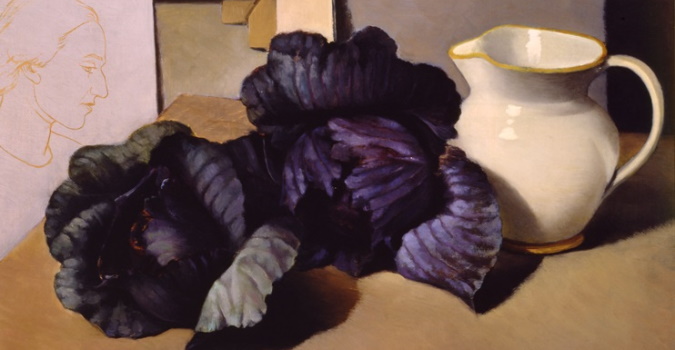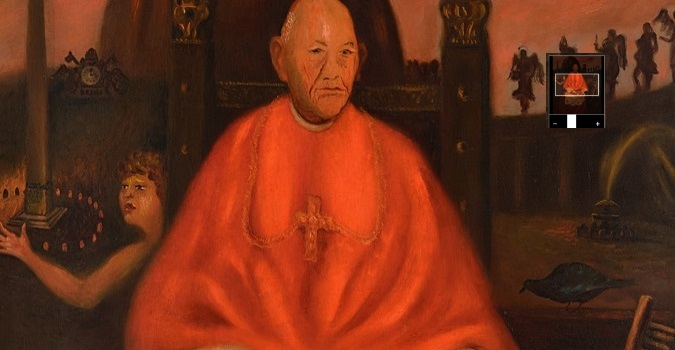The Artwork of the Month - January 2023
Francesco Trombadori
(Siracusa 1886 - Roma 1961)
Natura morta con cavoli rossi, boccale e tela, 1937
oil on canvas, cm. 49 x 59
inv. AM 1133

The Sicilian Francesco Trombadori is the main character in January's #operadelmese column with his painting 'Natura morta con cavoli rossi, boccale e tela' from 1937. A pottery mug and two red cabbages are arranged on a wooden table; behind it, following the centuries-old theme of the "picture inside the picture", there is a female figure in sanguine against a white background and an upside-down painting, seen from the back and leaning against the wall, a recurring motif in Trombadori's work.
This still life, typical of the artist's production in the years 1936-37, closely recalls, in its iconography and composition, other canvases by Trombadori, such as "Begonia e libri" (private collection) and "Natura morta con asparagi", also in the collection of the Galleria d'Arte Moderna.
A cultured and tenacious artist, after his Divisionist beginnings, in the early post-war period, when he frequented the Caffè Aragno art circle, Trombadori arrived at a realistic 'iconography of objects' that translates into a constant repetition of elements such as books, jugs, postcards, armchairs and tables that become 'citations and self-quotations'. These images express in their presence and in the formal balance that characterises them the intimate simplicity of everyday life and at the same time the complexity of the cultural references from which they spring and which range from Antonello da Messina to Piero della Francesca, from Masaccio to Caravaggio up to the Dutch of the 17th century and the contemporaries Cézanne, Matisse and Modigliani.
His daughter Donatella remembers the painter with these words: 'my father did not like to travel; he preferred to stay long hours in his studio at Villa Strohl-Fern, an empty room without any paintings hanging in it, as he was annoyed by any image that might distract him from his work'. The environment surrounding the still life table is thus probably the artist's studio, in which the objects, rather than being directly represented, are interpreted and placed in a universal and timeless dimension. In his last pictorial phase, from 1945 onwards, Trombadori preferred the landscape genre, with a large production of views of the capital: a silent, deserted and lunar Rome, interpreted in an almost metaphysical key.
The work was purchased by the Governorate of Rome in 1937 on the occasion of the 7th Exhibition of the Fascist Syndicate of Fine Arts of Lazio.
Return to the section > The Galleria d'Arte Moderna artwork of the month







































